The Weather: Transmission levels are even higher than last week’s (98.5 percent), with 98.8 percent of the population living in areas with substantial or higher transmission.
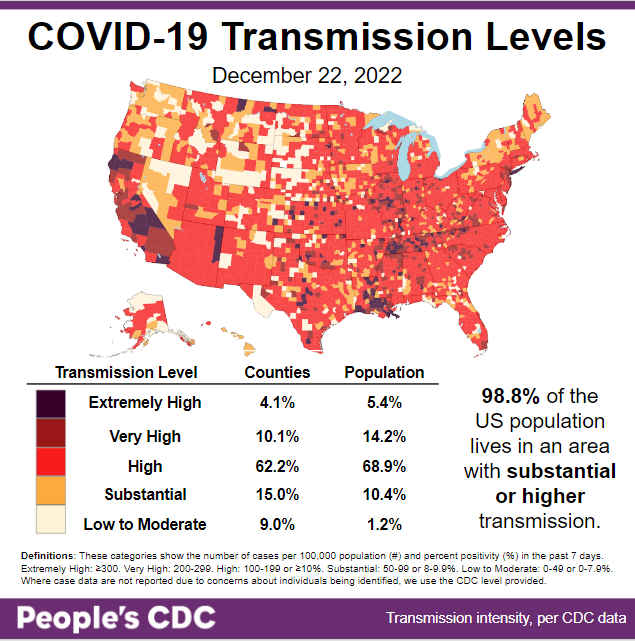
On Variants: The CDC variant report shows that BQ.1.1 is holding steady in the US at 36 percent of all variants. Other variants, like BA.5, BQ.1, and BF.7, are becoming less common.
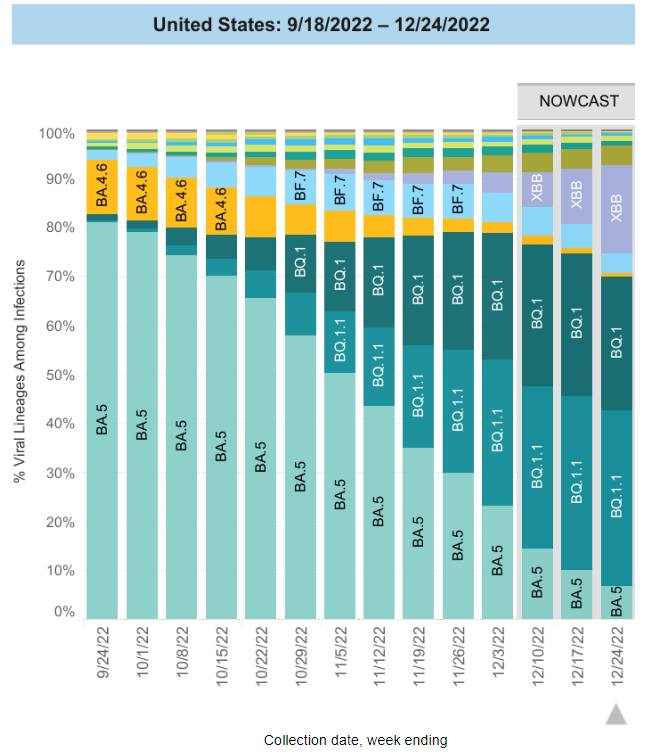
Meanwhile, XBB has shot up from 11 percent last week to 18 percent this week, which is a >50 percent increase! Variant XBB has evolved further into the more transmissible XBB.1.5, though the CDC is currently reporting on them together.
NY (and much of the northeast) is currently suffering the brunt of this new variant, with hospitalizations at their highest since January. Without serious COVID mitigation measures, XBB will likely balloon in the rest of the country in short order.
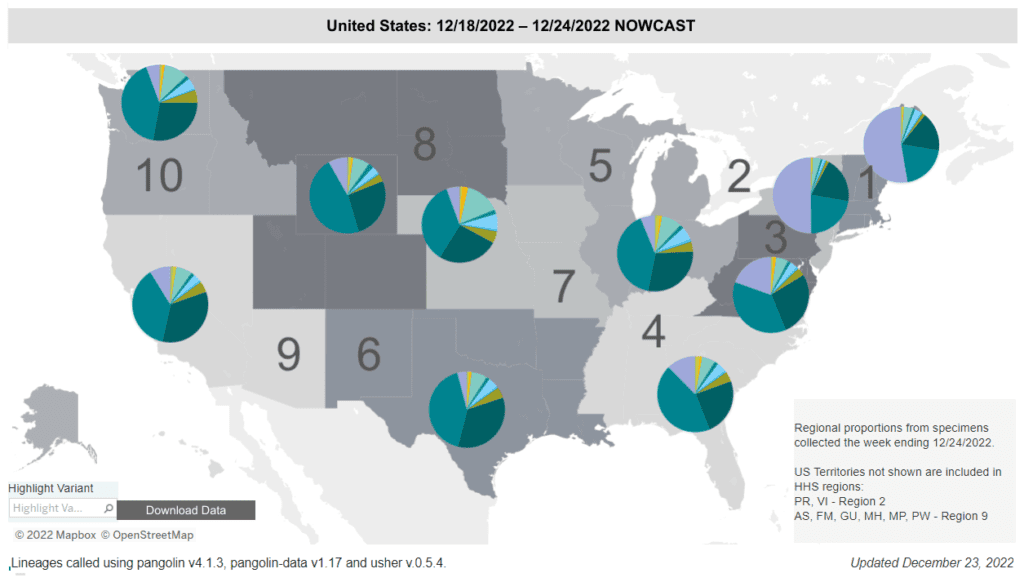
In some good news, preliminary findings show that the bivalent vaccine helps improve immune response to some of the most common circulating variants, including BQ.1.1 & XBB.
This corroborates last week’s CDC reports on bivalent effectiveness for reducing hospitalizations. Encourage everyone >6 mos to vaccinate for COVID & the flu, especially older folks—as well as take all the other precautions you can!
Wastewater Monitoring: National wastewater levels continue to rise this week, with the northeast hit the hardest. Levels are higher than any peak prior to last winter’s omicron BA.1 wave.
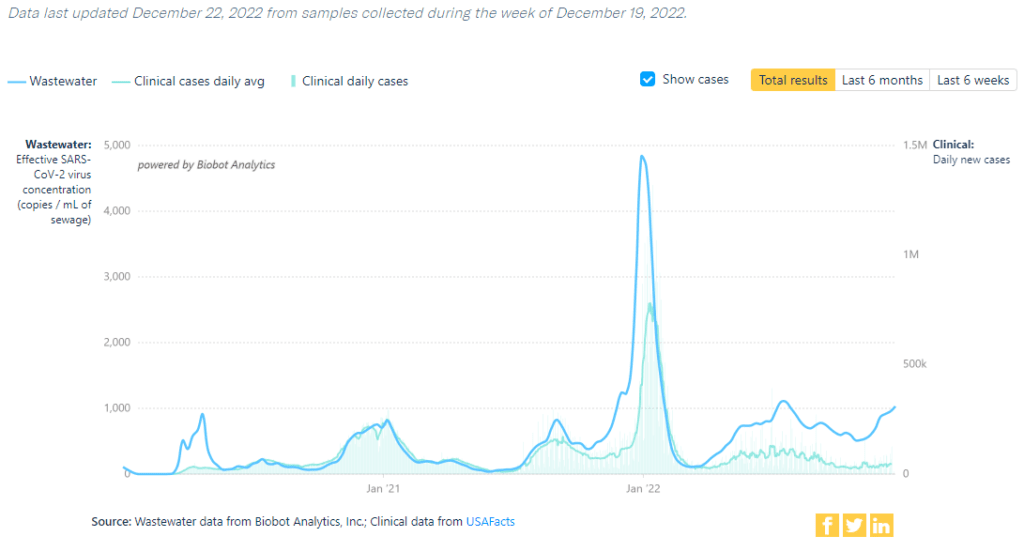
Hospitalizations: Hospitalizations are still rising across most of the US, with the current 7-day average at 5,376 admissions.
The CDC predicts that up to 12,400 new COVID hospital admissions will be reported on January 13, 2023.
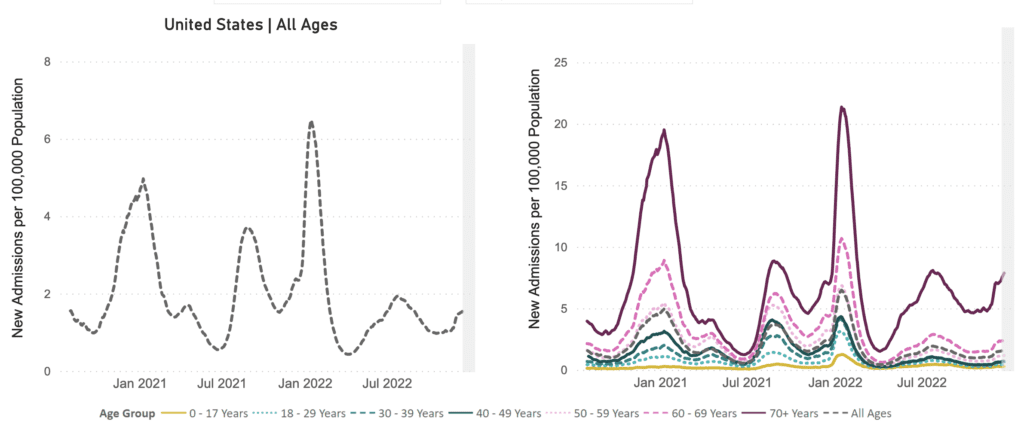
Yale Medicine’s guide on existing COVID pharmaceutical treatments provides a detailed overview, listing what the drug is, who it’s for, how it’s taken, its side effects, how it works, how well it works, and additional information.
Deaths: The week of December 21, at least 2,952 people died of COVID nationally. In 2022, there have been over 250,000 deaths nationally. This should not become our “new normal.”
Long COVID: A new study focused on the persistent loss of smell finds a resemblance to an autoimmune-like inflammation process in the nose.
This finding gives insight into the possible underlying causes of other Long COVID symptoms, like fatigue and brain fog.
Another study about the prevalence of Long COVID and its impact on daily living included findings suggesting that prevalence of Long COVID is higher in females, those with comorbidities, or those not up to date with boosters.
Forecast: RSV rates may be dropping, but COVID and flu continue to be on the rise. Importantly…
…and counter to the framing in the article above, we believe that precautions should be taken against respiratory transmission for as long as they are needed, and that we should continue fighting for better conditions for all.
If you are able, plan ahead for ways to obtain Tamiflu and Paxlovid or other COVID treatments.
Take Action: Sign this petition to demand that the National Institutes of Health (NIH) block plans to continue clinical trials, called RECOVER, that test debunked, harmful treatments for Long COVID, including exercise and cognitive behavioral therapy.
As we have reported on previously, exercise is likely to do more harm than good for those who have Long COVID. If you or someone you know has Long COVID, it may also help to email NIH and RECOVER researchers personally.
More schools, this time in NJ, are mandating masks to counter the surges due to COVID, RSV, and the flu. A Data for Progress poll showed that 56 percent of people support mask mandates to prevent COVID surges, which is encouraging.
Relatedly, @MandateMasksNY regularly updates its mask guide to show residents which public venues still enforce masking. Start something like that for your area, and let us know if there are other organizations doing the same!
Year-End Reflections: This is our last report of 2022. It has been a trying year, but we appreciate you for continuing to read and share our reports.
We appreciate you for caring about each other while the government continues to put profit over people. We need to keep organizing and keep fighting for a better world for everyone!
Starting today, the Weather Report team at the People’s CDC is taking a pause from our COVID updates to provide our volunteers a chance to rest in anticipation of the new year. Our next report will be out on January 9, 2023.
While we’re away, we encourage you to use and spread the word about the People’s CDC’s newest guidelines for Safer Gatherings. We wish you a safe, restful, and joyful holiday season!

Notes: 1) The numbers in this report were current as of 12/23. The CDC updates data frequently as it receives refreshed information. Today’s numbers may be slightly different from the data here. 2) Check out the links throughout & see our website for more! https://bej.gbh.mybluehost.me.